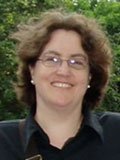
More Complementary & Integrative Healthcare Articles
Something Old, Something New Alternative Therapies Have Ancient Roots and Modern Applications
The news is out; alternative healing practices are built on ancient and carefully developed systems that offer real healing. With more and more trained and certified practitioners collaborating with physicians and hospitals, and more and more patients turning to alternative therapies, modern applications of traditional wisdom are changing the ways we live and heal.
And as doctors get more sophisticated diagnostic tools, they're finding out the alternative therapies not only work, but also offer sophisticated insights into the human body. For example, when Magnetic Resonance Technology (MRI) was first developed, medical doctors were excited that they could make detailed images of soft tissue, especially the brain and spinal cord, without x-rays or invasive procedures. They were astonished to find that images of the head needed continuous readjustment, because even if a patient stayed perfectly still, the image seemed to blur. As designers developed adaptations for the machine, doctors realized that the problem was not the equipment, but the human head; just as cranial-sacral therapists had been saying for a hundred years, the bones of the skull pulse with a rhythm imperceptible to the eye, but as vital and individual as our heartbeat!
Cranial Sacral Therapy (CST) gently balances this rhythm (which extends down the spine and throughout the body) to correct insidious health problems like migraines, TMJ, organ overload and misalignment of the body. Like many alternative modalities, CST grew out of traditions that see the body and its systems a little differently than modern medicine, and observe sickness as a part of a larger system that needs to be balanced and restored to health for the disease to be released. By treating the whole body rather than the isolated symptom, CST and other treatments can prevent, ease, or even cure illnesses that threaten our well-being.
The NIH agrees. Its special research unit for alternative healing has found that reiki (a simple, energetic healing touch) and meditation can be useful in treating stress-related diseases. Those include most of the diseases that plague our current society, from heart disease and diabetes to fibromyalgia and cancer. Why do all these illnesses respond to a reduction of stress? Because the human immune system, and all the organs and cells in our body, react to stress as an assault that reduces our abilities to process food, to fight against viruses and disease, to sleep and to heal.
When I was teaching in China in 2006, I met wealthy business executives who always made sure to receive acupuncture treatments, drink specially prepared herbs to bolster their immunity, and meditate regularly to preserve their health. Although the communist government does not always support the ancient traditions (a policy left over from Chairman Mao's modernization movement), the ancient sciences of China are part of nearly every household. Of course, people still get operations and take antibiotics when they need to, because modern medicine has achieved great things. Like the Chinese, I believe alternative and allopathic medicine go hand in hand.
The Chinese have an advantage over us Americans in this way, because they inherited thousands of years of wise body-mind management, and combined it with modern techniques. In the United States, a younger country in love with “hard science,” we have needed a little more convincing. The good news is that our doctors and researchers are affirming what older cultures already know. That is, alternative therapies come from traditions that paid close attention to human needs and systems, and have something important to offer.
Something old can also be something gold. The partnership between medical science and traditional healing is very exciting. Drug companies work with the rainforest shaman to identify healing herbs that become our pharmaceutical miracles. Hospitals invite reiki practitioners to speed post-operative healing, reduce pain and swelling, and help prevent infection. And many doctors are happy that their patients are exploring ways to heal their whole system, encouraging people to work with chiropractors, massage therapists and energy workers (reiki, CST).
Finding the right alternative therapy can be a little challenging, because there's so much to choose from, and doctors are too busy to do the research that would help them keep up to date with every modality. It's up to the patient to do that research, and then find a certified, dependable healer to work with. But the extra effort usually pays off in greater health and well-being over the long term. Healing systems that work with the whole person, not just the illness, often make the difference between only surviving and really thriving.

















